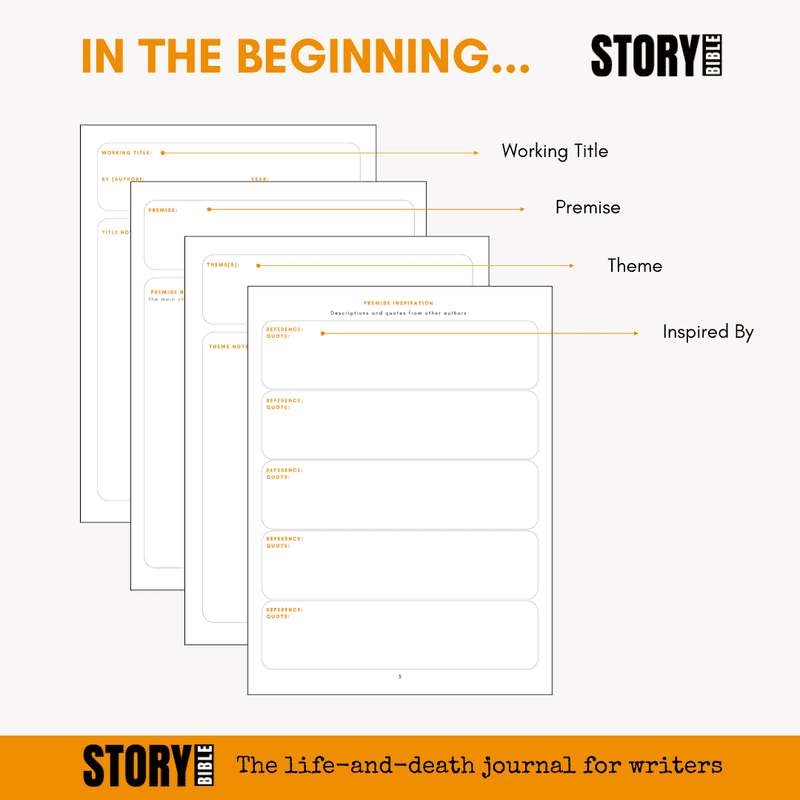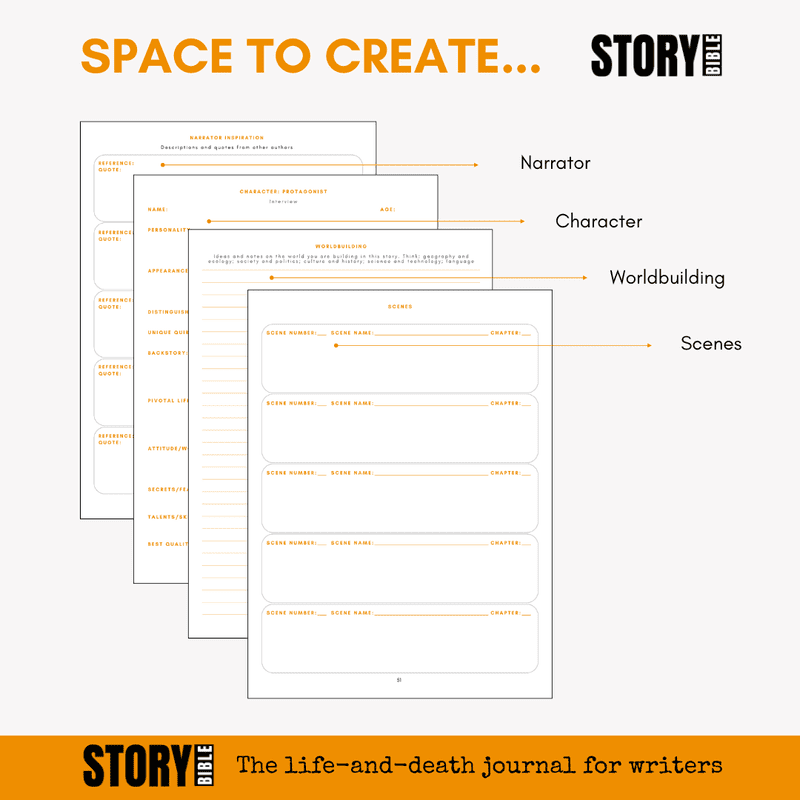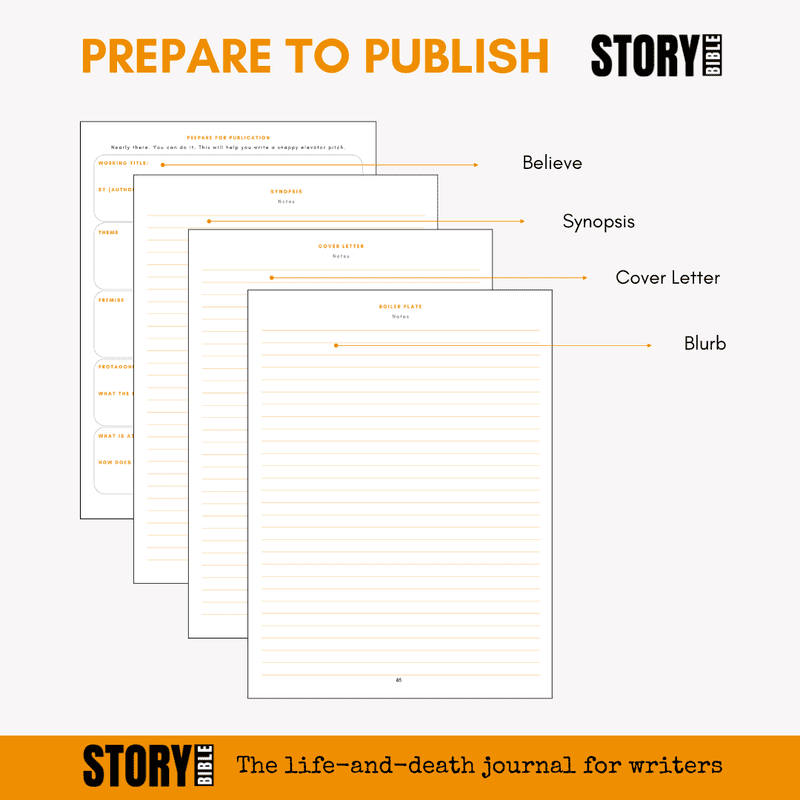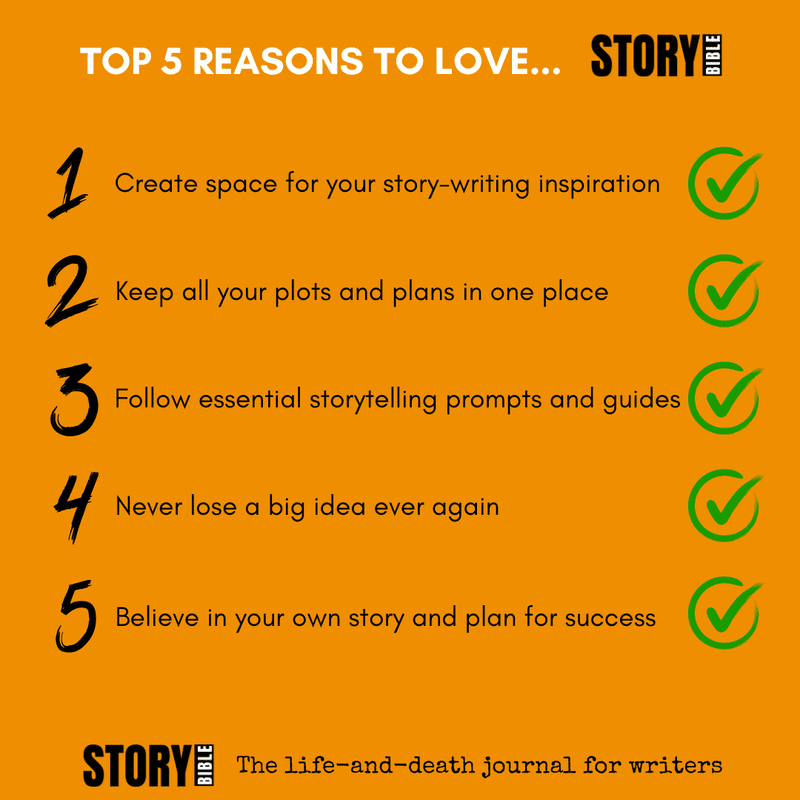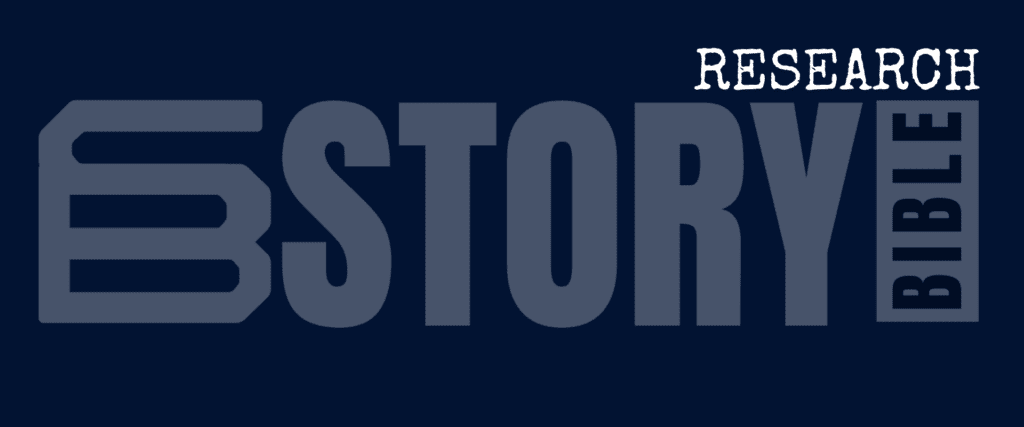Just 5 of the ways Story Bible can revolutionize how you write.
For many writers - if not most - the blank page can be a daunting foe, and the process of crafting a compelling narrative can feel like navigating a labyrinth without a map. But what if you had a secret weapon to help you stay on track, develop rich characters, and build a world that readers love?
Enter Story Bible, the life-and-death journal for writers.
Here are just 5 ways Story Bible can revolutionize your writing process and take your storytelling to the next level.
#TL;DR [Too long; didn't read]: 1. Consistency; 2. Character Development; 3. Wordbuilding; 4. The Ultimate Plotting Tool; 5. Organization
1. Consistency is Key
Story Bible helps you gather all the intricate details of your narrative in one journal where they will be easily accessible when you are writing. Folders and boxes filled with notes work for some writers; digital files work for others.
Story Bible is one hardbacked, durable journal that can travel with you, no matter where you go, or live on a shelf in your home. One Story Bible for each writing project, with notes, research, and inspiration for each in one place.
Story Bible is structured with prompts and guides too, with plenty of space for inspiration in between.
Check out our FREE contents checklist to see how you build your own Story Bible.
Whether you are developing complex character arcs, intricate plot points, or vividly detailed settings, Story Bible ensures that every element remains aligned and coherent as you maintain a comprehensive record of character traits, timelines, and key events. Story Bible therefore helps you avoid common pitfalls such as plot holes and character discrepancies that could ruin your story and annoy your reader.
Remember: consistency is key even in one story and absolutely essential if you are writing a series.
Consider the challenge of keeping track of character development over the span of a lengthy novel or series. Without any story bible, it's easy to forget minor details such as a character's eye color, their specific mannerisms, or significant past events that shape their motivations. These seemingly minor inconsistencies can detract from the authenticity of your characters, making them feel less believable to your readers. By documenting every aspect of your characters in Story Bible, you can ensure that they remain consistent, well-rounded, and true to themselves throughout your story.
Similarly, plot continuity is another area where Story Bible proves invaluable. Complex storylines often involve multiple subplots and interwoven events that need to synchronize seamlessly from beginning to end. Story Bible allows you to map out your plot points, track the progression of events, and monitor the development of various narrative threads. This minimizes the risk of plot holes or contradictory events that can confuse readers and undermine your story's credibility.
Furthermore, maintaining consistency in settings and timelines is crucial for creating a believable world. Story Bible reminds you to include detailed notes on the geographical layout of your fictional world, historical timelines, cultural norms, and other world-building elements. This ensures that the setting remains consistent and immersive, enhancing the reader's overall experience.
Story Bible is a safeguard against inconsistencies, allowing you to focus on crafting a compelling and cohesive narrative.
2. Developing Rich Characters
Story Bible is an invaluable tool for developing rich, relatable characters. By meticulously documenting character backgrounds, motivations, arcs, and relationships, you ensure that each character is fully fleshed out and authentic. This comprehensive documentation allows for consistency and depth, helping you to create characters that resonate with readers.
One of the primary benefits of using Story Bible is to record and develop detailed character backgrounds. This includes not only basic information such as age, appearance, and occupation, but also more nuanced aspects like personal history, family dynamics, and key life experiences. By delving into these details, you can better understand what drives your characters, making them more believable and compelling.
Motivations are another critical element that can be thoroughly explored using Story Bible's prompts. Knowing what motivates your characters helps to guide their actions and decisions throughout the story. It ensures that their behavior is consistent and logical, which is crucial for maintaining reader engagement. Documenting these motivations in your story bible allows you to refer back to them when required, ensuring that your characters' actions remain true to their established motivations, their needs, and their wants.
Character arcs are absolutely essential for showing growth and development over the course of the story. Story Bible helps you map out these arcs in advance, providing a clear trajectory for how each character will change and evolve. This foresight prevents characters from becoming stagnant and keeps the narrative dynamic and interesting. Additionally, tracking arcs in your Story Bible ensures that each character's journey is coherent and impactful.
Relationships between characters are equally important and can be intricately detailed in Story Bible. Recording how characters interact with one another, their conflicts, alliances, and emotional bonds, adds layers to your story. This attention to relationships makes interactions more authentic and heightens the emotional stakes of your story.
Finally, maintaining character development throughout the story is made easier with Story Bible. By regularly updating your character profiles and arcs, you can ensure that development is consistent and avoids any plot holes or inconsistencies. This practice helps to make your characters memorable, leaving a lasting impression on your readers.
3. World-Building Made Easy
Creating a compelling and immersive world is a cornerstone of effective storytelling, and Story Bible can significantly streamline this process. as you will include all the intricate details that make up your story's setting in one place. By meticulously documenting the various elements of your story's world, you ensure consistency and depth, which are essential for crafting a believable and engaging narrative.
Start with the geography of your world. Outline the different regions, cities, and landmarks that your characters will interact with. Include maps if possible, and detail the natural environment, such as climate, flora, and fauna. This not only helps you visualize the setting but also provides a reference point for maintaining continuity throughout your story.
Next, delve into the history of your world. Document significant events, wars, alliances, and shifts in power that have shaped the current state of affairs. This historical context adds layers of complexity and realism, offering readers a sense of a living, breathing world with its own past.
Cultures are another crucial aspect to consider. Highlight the various customs, traditions, languages, and social structures that define different groups within your world. This cultural richness can enhance your narrative by providing diverse perspectives and motivations for your characters.
Don't forget to establish the rules of your world. Whether it's magic, advanced technology, or unique societal norms, clearly defining these rules ensures that your story remains consistent and logical. This framework helps readers suspend disbelief and fully immerse themselves in your narrative.
Other examples of elements to include in your Story Bible include the political landscape, details of the governing bodies, political factions, and key figures. You could also include information on economic systems, religious beliefs, and significant myths or legends that influence your world.
By keeping track of these elements in your Story Bible, you create a cohesive and believable setting that not only enhances the reader's experience but also serves as a valuable reference for you as the writer. This organized approach to world-building can transform a good story into a truly great one.
Story Bible leaves plenty of space for inspiration. Read more below.


4. The Ultimate Plotting Tool
Story Bible is an indispensable resource for writers aiming to create a well-structured and compelling narrative. It allows you to outline and refine your story meticulously, ensuring that both main plots and subplots are cohesively interwoven. We have dedicated sections of your Story Bible to map out key scenes and plot points so you can maintain a clear vision of your narrative's trajectory and its speed.
One of the primary benefits of Story Bible is that it helps you to track and develop each plot twist and turn. You can document each scene and its role within the larger narrative. This then helps you to identify inconsistencies and areas that may need improvement. This organized approach helps editing, whether you're tightening up a subplot or enhancing the main storyline.
Effective plotting techniques can be greatly enhanced through the use of Story Bible. For example, you can develop and record a three-act structure, with each act broken down into its constituent parts, chapter-by-chapter, and scene-by-scene. This not only helps in maintaining narrative momentum but also ensures that crucial turning points and climaxes are strategically placed.
Moreover, documenting your plot and structure in your Story Bible provides a comprehensive reference point throughout the writing process. This is particularly useful during revisions, as it allows you to revisit your initial plotting decisions and evaluate their effectiveness. By maintaining this level of organization, you can create a narrative that is both engaging and structurally sound, ultimately enhancing the reader's experience.
5. Organizing Chaos
Story Bible significantly enhances your writing process, offering a structured repository for all your narrative elements. By gathering character profiles, plot outlines, world-building details, and thematic notes in one organized document, writers can streamline their workflow and boost productivity.
One of the most immediate benefits of Story Bible is the reduction of time spent searching for information. Instead of flipping through scattered folders or digital files, everything you need is at your fingertips, allowing for quicker reference and smoother, less stressful writing sessions.
Moreover, Story Bible can mitigate writer's block by providing a clear roadmap. When the next plot point or character arc is outlined, decision fatigue diminishes, and creativity flows more freely. For instance, knowing your protagonist's motivation and backstory ensures consistency and depth in your narrative, preventing the dreaded mid-story stumbles. The clarity of an organized Story Bible transforms the writing experience from a daunting task to a manageable, even enjoyable, endeavor.
We organize that Story Bible for you and you just have to fill it with ideas and inspiration.

